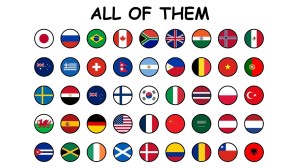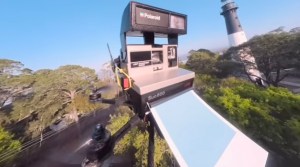In an illuminating episode of Veritasium, host Derek Muller explains the science and the history behind electronic image display and its subsequent broadcast ability. Muller traveled to San Francisco to speak with video expert and collector Richard Diehl, who supplemented a great deal of information from his own experience. In the latter half of the video, Muller talks about the difference between film and video, particularly how the two traded places in terms of efficiency and popularity.
I grew up with the two technologies (film and video) in parallel and to me, they always seemed like two ways of achieving the same ends: recording and replaying moving images. But their histories are quite distinct. Film was always a way to capture moving images for later replaying. Video started out as a way to transfer images from one place to another instantaneously. This dates back to the first fax machine, mechanical TV, live broadcast tv and ultimately videotapes. This history focuses on the early decades of video and not the more recent switches to chip cameras and solid-state storage.






